What does it take to reach the deepest part of the ocean?
Few adventurers have successfully journeyed to the bottom of the Mariana Trench but, as Mick O’Hare finds, the achievement often overshadows the rest of their lives

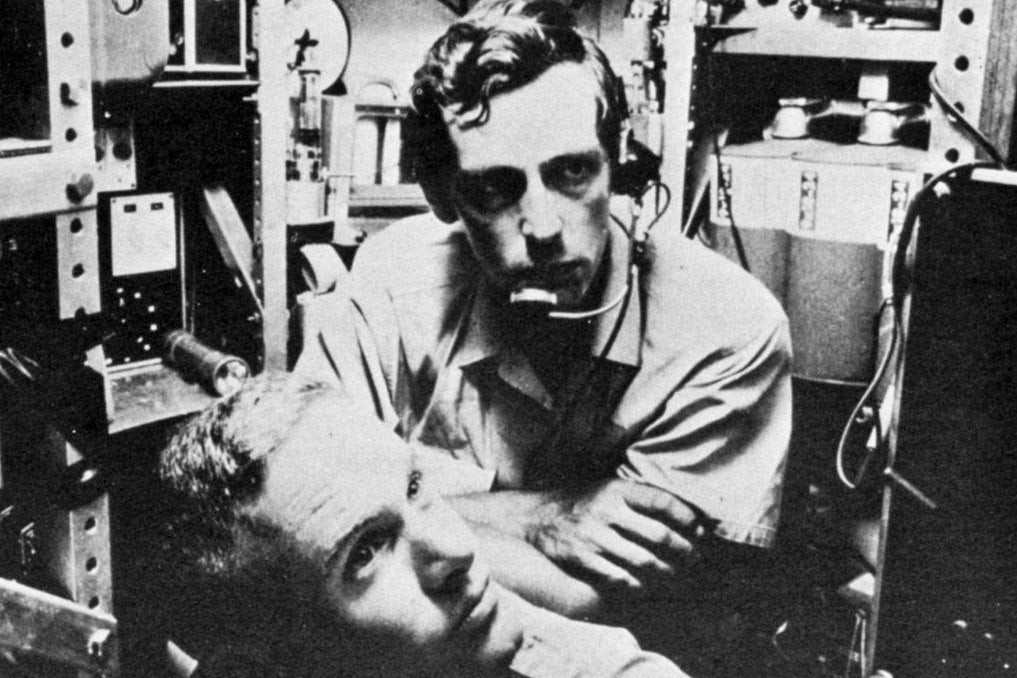
It’s no insult to Jacques Piccard and Don Walsh to say most people were looking the other way when they undertook their record-breaking feat 60 years ago. Sputnik had just transformed the way we view our planet and other satellites, some carrying living animals, had followed it into space. Soon the Soviet Union would launch the first human, Yuri Gagarin, into orbit. The space race had kicked off in spectacular style so perhaps humankind could be forgiven for paying little heed to what was going on below its feet.
On 23 January 1960 Swiss oceanographer Piccard and Walsh, a lieutenant in the US navy, entered their submersible, a “bathyscaphe” called Trieste built to withstand the huge pressures at the depths of the ocean, and were lowered from the USS Lewis into the Mariana Trench in the northwest Pacific. They were entering the deepest part of any ocean anywhere in the world, a yawning cleft in the Earth’s crust and a full 11 kilometres below sea level.
The crew of their support vessel had located the deepest point by pretty unsophisticated means. They had lobbed depth charges into the sea and recorded the rebounding shock waves to create a map of the ocean floor. Pretty certain they were at the right spot, the bathyscaphe was released. For five hours the “bathynauts” descended until they entered the fissure of the Challenger Deep, the deepest part of the trench.
However, their journey hadn’t been plain sailing – bad pun notwithstanding. To conserve energy, the submersible’s external lights were frequently off and at such depths no sunlight penetrates. It was dark, cold and lonely and the two men, and their tiny seats, were crammed into a space of about two and a half square metres. “Not much room at all,” says Walsh “about the size – and temperature – of a refrigerator.”
There was a modicum of concern when a rivulet of water dribbled down the wall after an hour of descending and more worried frowns when at about five kilometres deep another leak appeared. They carried on down after they convinced themselves the flow wasn’t increasing.
Piccard, who alongside his father Auguste had helped to design the Trieste, remained confident. But when they had just passed nine kilometres, and with a column of water above them exerting a pressure of about 200,000 tons across the top of the submersible, the last thing they wanted to hear was a cracking sound. But they did, and it was very loud. It was a heart-stopping moment as the two explorers stared at each other through the gloom.
The noises continued but nothing was immediately obvious and, reassured by the 13-centimetre steel walls surrounding them, with intrepid zeal they opted to continue, hitting the ocean floor at a depth eventually estimated to be 10,916 metres below sea level (other recordings have since put the bottom of Challenger Deep at anywhere between 10,911 and 11,034 metres).
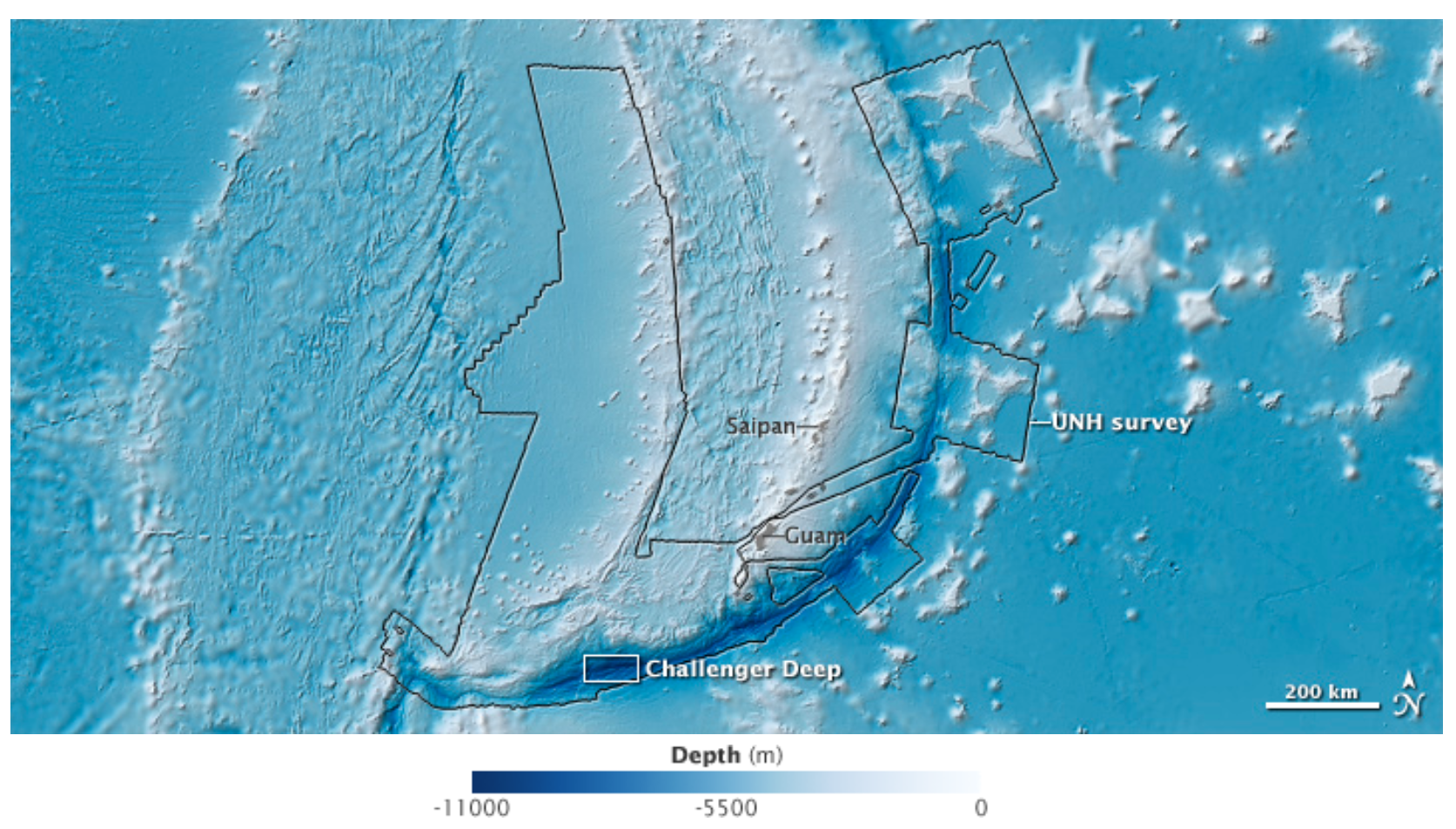
Although the bathyscaphe stirred up oozy white sediment making the view through the single extremely thick Plexiglas window rather murky (“Like being in a bowl of milk,” said Walsh) they saw a flatfish and shrimp species. Although their observations were disputed by biologists who insisted nothing could survive the immense pressures at such depths – around a ton per cubic centimetre – they were later proved correct: life could exist there although no other flatfish has been spotted and it has been assumed since that this may have been a sea cucumber.
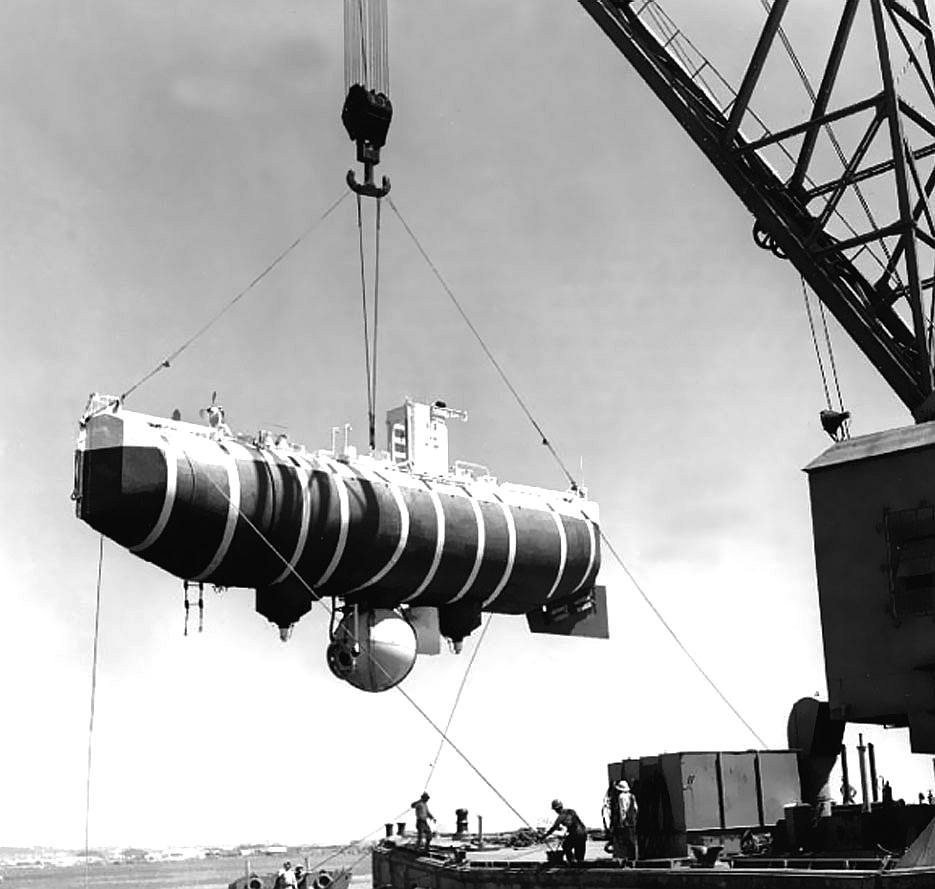
Piccard would later write: “Here, in an instant, was the answer to the question biologists had asked for decades. Could life exist in the greatest depths of the ocean. It could.” He described his sighting as “resembling a sole, about one foot long. Even as I saw him, his two round eyes spied us – a monster of steel – invading his silent realm.”
Piccard describes how the two men shook hands and took a deep breath. They also discovered the source of the loud noise they heard, the viewing window had split slightly and Piccard hastily aborted the mission by dumping the iron-pellet ballast Trieste was carrying and headed for the surface. It was later discovered that the window crack was caused by the temperature difference between the inside and the outside of the bathyscaphe rather than water pressure but the threat was much the same.
As they rose to the surface the crack appeared to seal itself but Walsh admits that “getting to the surface was a relief. I had signed up because it seemed more interesting than desk work but I did want to come through it alive.” Although Piccard died in 2008, Walsh still lives in Oregon and, aged 88, continues to travel the world researching the oceans and lecturing on marine exploration.
You need both craft and pilot to be in fine working order. If anything goes wrong down there you can’t just call up roadside assistance. Down there it is desolate and alien. In the space of one day I went to another planet and back
The Mariana Trench is a crescent-shaped fissure in the ocean floor 200 kilometres east of the Mariana Islands and is now protected by US maritime laws while the specific area of the Challenger Deep is in the ocean territory of the Federated States of Micronesia. The whole feature was created by the Pacific Ocean tectonic plate plunging beneath the Mariana plate to its west, creating a huge gorge as the former bends downwards to pass under the latter.
The trench is 2,550 kilometres long – or more than five times the length of the Grand Canyon – but only 69 kilometres wide. If Mount Everest was dumped into it, its peak would be two kilometres beneath the surface of the sea. At its bottom the pressure is around 1,100 times that at sea level.
The Challenger Deep is so named because it was first surveyed by a Royal Navy corvette, HMS Challenger, which had actually been blown off course while heading for Guam in 1875. Back then they dangled a weight off a rope to measure depth, so the crew were fortuitous in having the length for such an unexpected find to hand. They reckoned it was 4,475 fathoms (or 8,184 metres) deep… or maybe that’s when the rope ran out.
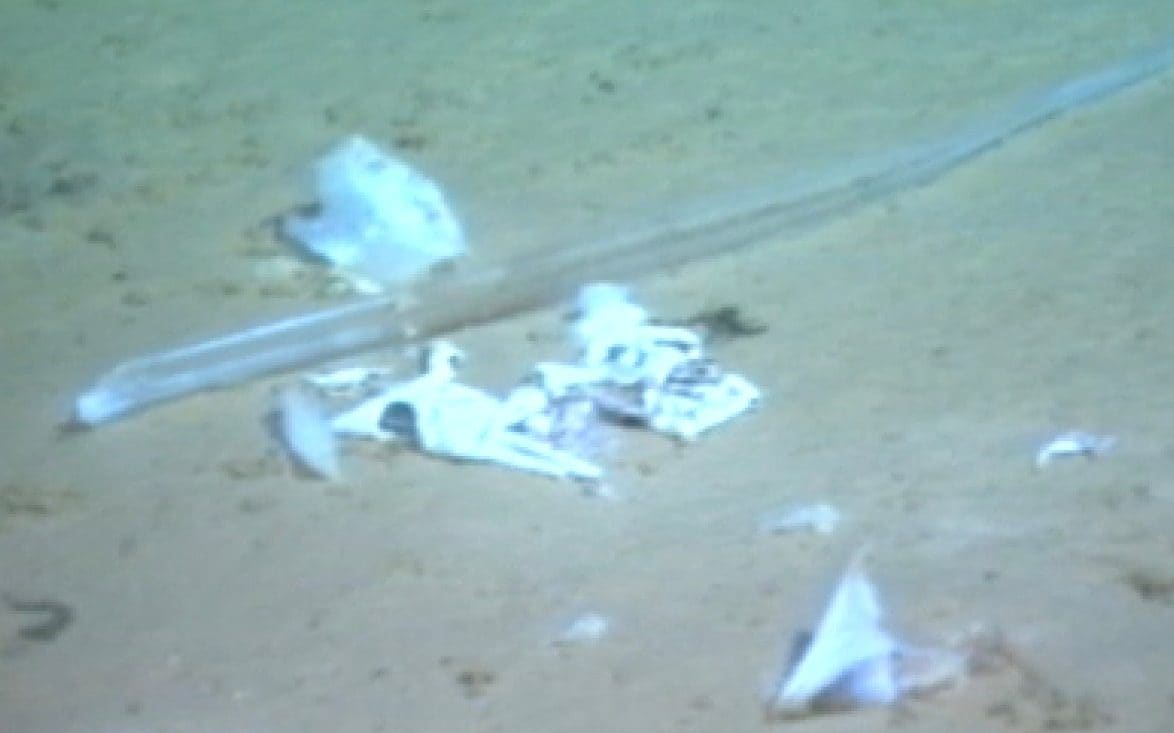
No light will penetrate seawater below a depth of around 1,000 metres, so most of the trench is in permanent darkness, while water at the bottom is only a degree or two above freezing. Not for nothing is the zone below about six kilometres deep, known as the Hadal zone, named after Hades, Greek god of the underworld and the dead.
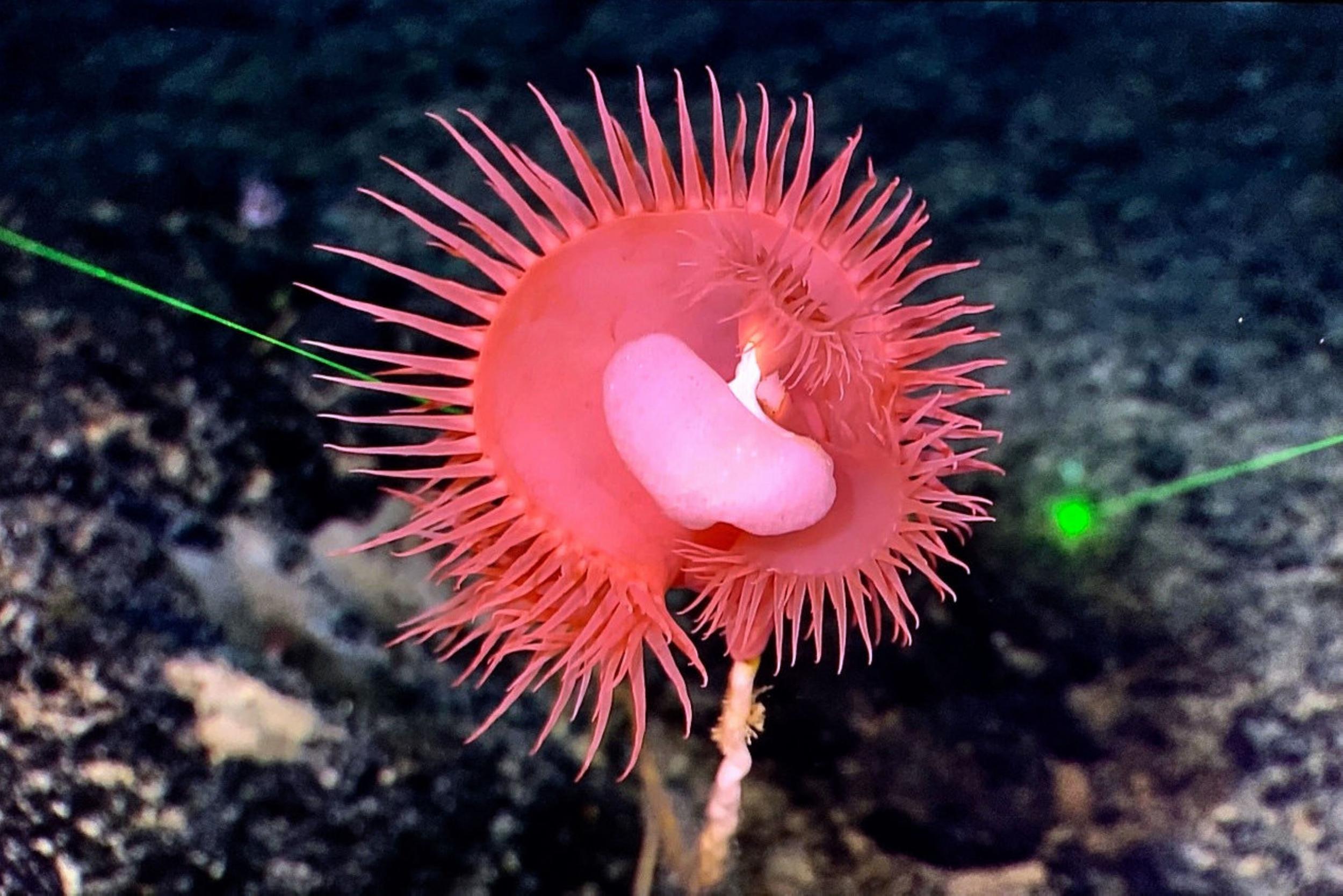
So what have we learnt since those early pioneers visited the deepest ocean floor? And what on earth can survive down there? The reason biologists were sceptical about Piccard’s flatfish sighting is it’s believed that at such great pressures calcium cannot exist in solid form. The pressure would convert it to liquid in the way ice turns to water when pressure is applied to it. And no calcium means no bones, and no fish. Nerves, too, would also stop working.
The deepest fish ever recorded was a new species discovered in 2014 when it was filmed at a depth of 8,145 metres (although another unidentified and unverified fish was later estimated to be at 8,178 metres). “It would appear to be a fragile, pale pink and very weird-looking species of snailfish,” says Alan Jamieson, senior lecturer in marine ecology at Newcastle University, and an expert in the Hadal zone.
It has since been dubbed the Mariana snailfish. “It’s about as deep as any fish can go,” believes Jeffrey Drazen of the University of Hawaii, who led the expedition that discovered it.
The more carbon captured in ocean sediment, the more oxygen we have in our atmosphere. This is a major component in protecting the Earth from human actions and we need to be very careful before altering this environment in any way
Beneath this depth, and until relatively recently, many scientists believed life was almost virtually impossible. In 1859, Edward Forbes, a scientific contemporary of Charles Darwin who studied the Aegean Sea by dredging its sediments, wrote: “As we descend deeper and deeper in this region, its inhabitants become more and more modified, and fewer and fewer, indicating our approach towards an abyss where life is either extinguished, or exhibits but a few sparks to mark its lingering presence.”
Far more life exists in the ocean depths than Forbes expected, but he was correct to say that, as extreme depth increases, its scope is limited and, as studies of the bottom of the Mariana Trench have shown, far more primitive.
The intense pressure means minerals dissolve in liquid and animals find it difficult to build shells or other hard structures. Almost certainly gone is Piccard’s flatfish to be replaced by simple often single-celled creatures such as amoeba.
But these, which at sea level can be microscopic, are the big-daddy versions, called foraminifera, which appear to act as hosts for other organisms. And some types can use the silica in sand on the ocean floor to get round the problem of creating a shell that doesn’t dissolve. But despite being primitive, life at the bottom of Challenger Deep is relatively diverse despite food being extremely limited and the need to survive perpetual darkness and pulverising pressure.
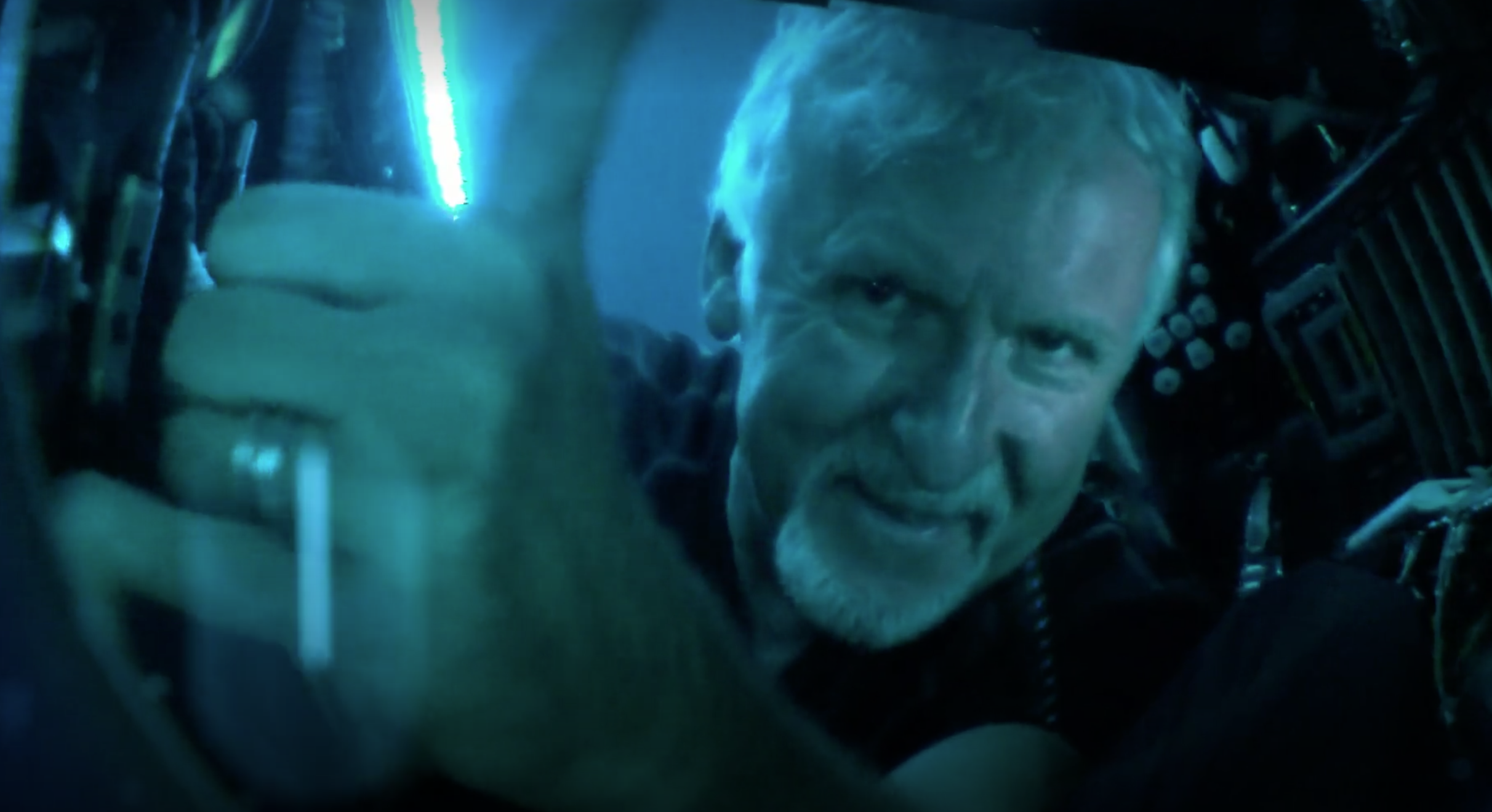
The most abundant species found there other than the foraminifera are amphipods, shrimp-like scavengers, and holothurians, in the form of translucent sea cucumbers. The sediment, however, houses many more micro-organisms – up to 200 species have been collected in samples taken from the bottom of the trench.
No light, of course, means no algae or plants can grow in the depths. And so limited is the amount of food that falls to the bottom of the Mariana Trench, that some species exist on chemicals, such as sulphur or methane, emitted from the seafloor sediment or underwater vents.
Of course bacteria, as everywhere, is in abundance with species that may feed off the hydrogen and methane released when the tectonic plates surrounding the trench shift, living off what is effectively a geological burp. According to Patricia Fryer at the University of Hawaii, studying such species allows us to better comprehend how life on Earth could have formed in far more inhospitable and unpromising circumstances than exist today, as well as modelling how alien life might form in un-Earthlike conditions.
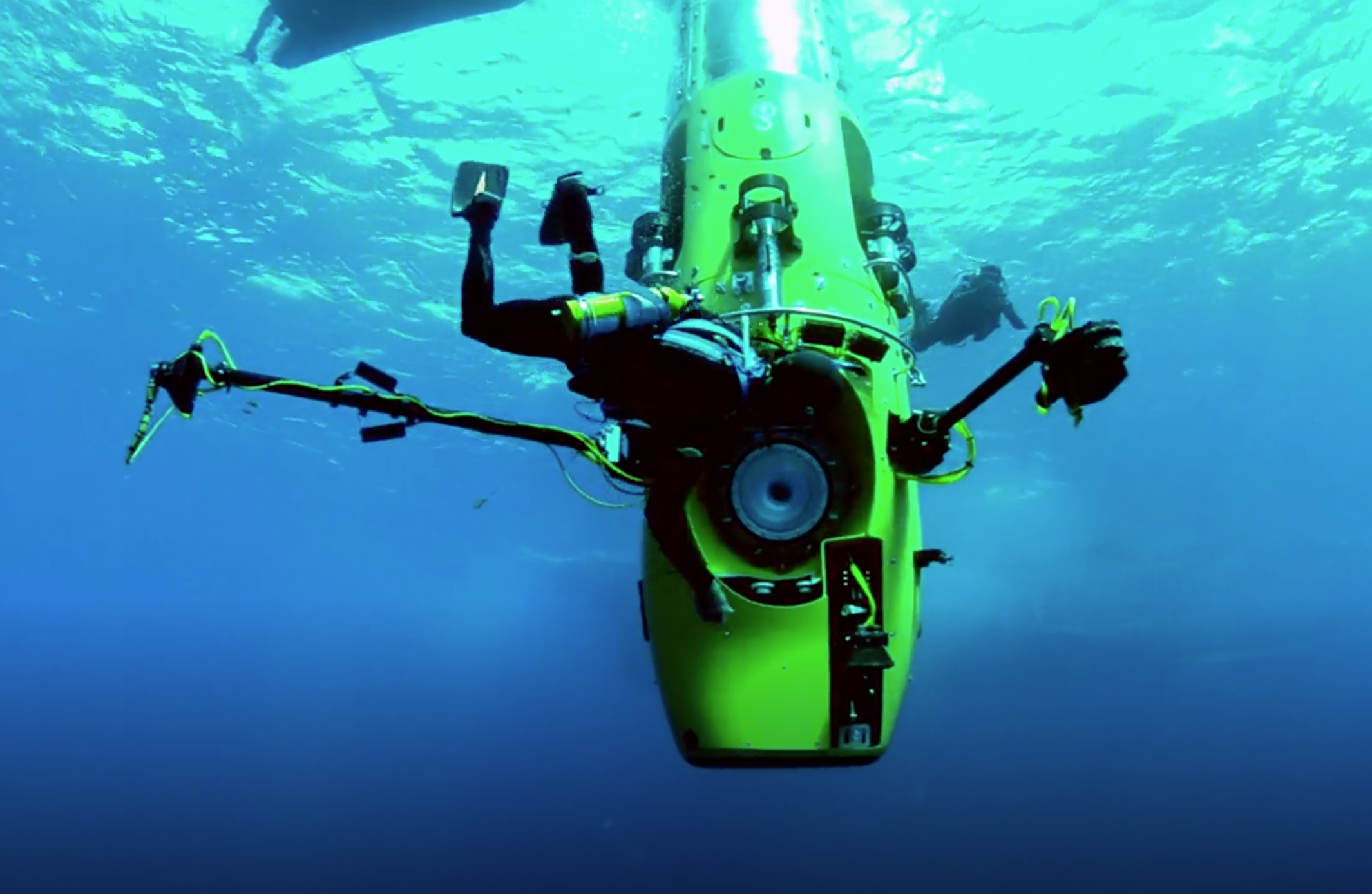
But it’s not just life we are learning about down there. The sheer depth of the trench in the middle of a subduction zone where two tectonic plates are colliding gives unparalleled opportunity to study the Earth’s geology. Crude geological burps apart, volcanic activity has been discovered at a depth of 5,000 metres, the deepest eruptions ever recorded. And because the lava freezes so quickly when it is extruded into the sea it instantly forms a glass – no coarse crystals have time to grow. And vents bubbling liquid sulphur and carbon dioxide provide nutrients for the lifeforms that have adapted to this hostile environment.
The Eifuku volcano – part of a chain of volcanoes that in some cases poke out above the sea to create the Mariana island chain – is spewing liquid carbon dioxide out of its vents and the Daikoku volcano is producing molten sulphur, something never seen before. “Nobody expected explosive volcanic activity at such depths,” Fryer explains.
There’s also a more pressing concern, one that we are living with the consequences of already. The depths of the Mariana Trench, including the Challenger Deep, are a source of carbon, protecting the planet above by capturing and storing the element critical in global warming and climate change when it combines with oxygen to form the gas carbon dioxide.
Quoted in The Guardian, Ronnie Glud, a biologist at the University of Southern Denmark, stresses its importance. “The more carbon captured in ocean sediment, the more oxygen we have in our atmosphere,” he says. “This is a major component in protecting the Earth from human actions and we need to be very careful before altering this environment in any way.”
Here, in an instant, was the answer to the question biologists had asked for decades. Could life exist in the greatest depths of the ocean. It could
It has been a long process making these scientific discoveries in the trench. Since Piccard and Walsh surfaced back in 1960, for years very little happened. Indeed no human visited the bottom of Challenger Deep until a full 52 years had elapsed.
There had been a few remote-controlled uncrewed probes since the 1990s but it wouldn’t be until 2012 that a human ventured so far down into the ocean once again. And, as life imitates art, the next visitor was James Cameron, the Canadian director of The Abyss, the science fiction movie set at the bottom of the ocean, and also the blockbuster Titanic.
On 26 March he made a solo mission to the bottom of Challenger Deep in the deep-submergence vehicle (DSV) Deepsea Challenger. His journey down took half the time of his forerunners’, but like them he had to cut short his time on the ocean floor when a hydraulic leak caused the loss of his starboard thrusters. “I drove across the flat plain for a distance,” says Cameron, “but saw no fish. The only free-swimmers I saw were small amphipods.”
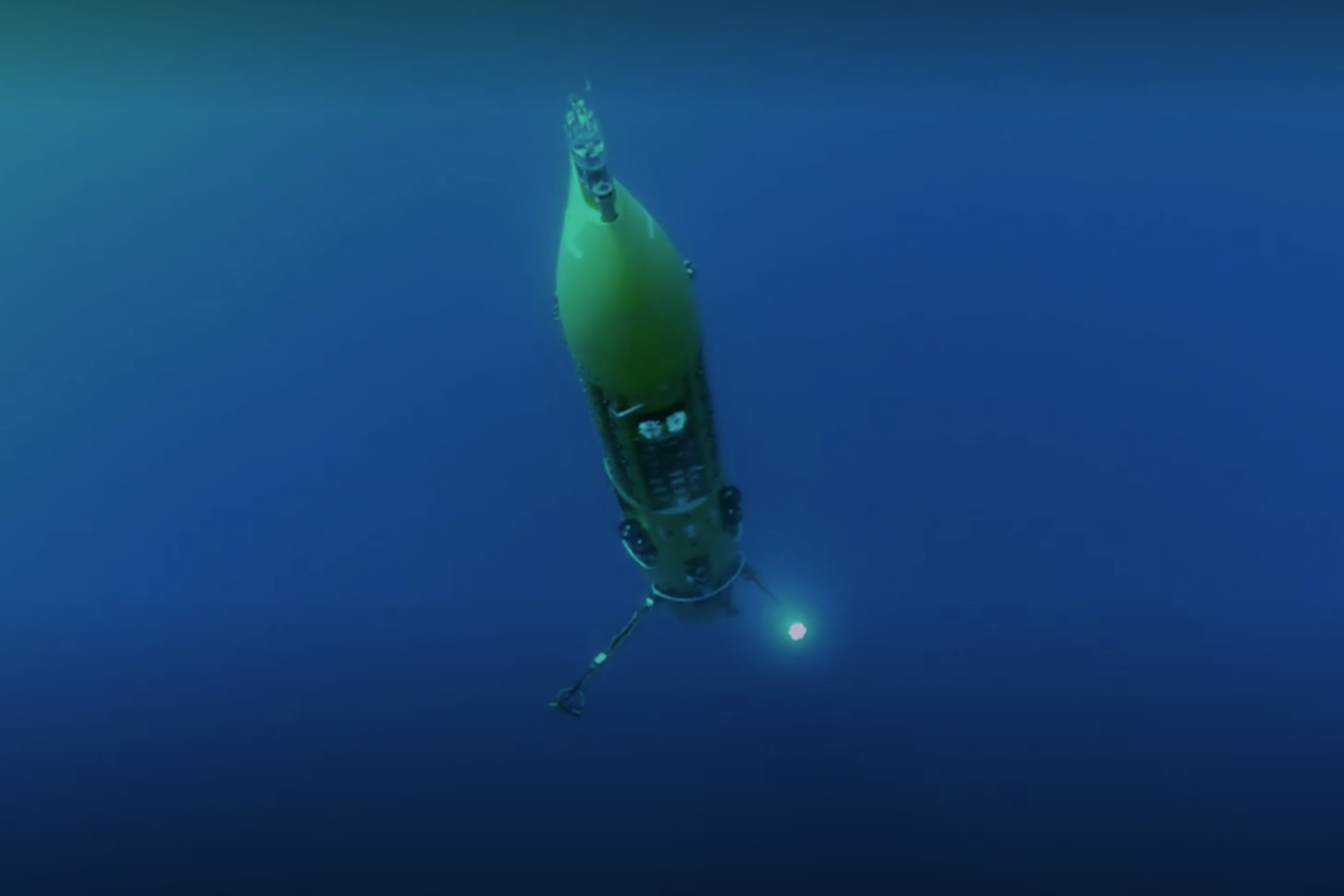
Again, like his predecessors, his working conditions were cramped, Cameron even practised yoga to train for achingly bent limbs and immobility. “You need both craft and pilot to be in fine working order,” said Cameron on his return. “If anything goes wrong down there you can’t just call up roadside assistance. Down there it is desolate and alien. In the space of one day I went to another planet and back.”
Walsh was there to advise the film director, as he was when the most recent visits to the bottom of Challenger Deep were undertaken last year. Just like the exploration of space, the oceans are increasingly the preserve of entrepreneurial activity, as is science and technology generally. Cameron paid for his mission through documentaries and movies telling the story of his journey and what he discovered in the depths, and the most recent Five Deeps Expedition has been sponsored by numerous academic organisations and private companies.
The expedition’s DSV Limiting Factor, piloted by billionaire and former US Navy reserve officer Victor Vescovo and his colleagues, made four dives into Challenger Deep last year. Vescovo set numerous records – the first person to travel to the bottom of Challenger Deep on multiple occasions; the deepest point reached by a human (now measured as 10,928 metres); and the longest accumulated time spent by a human in Challenger Deep. He was, it is sad to say, also the first person to have spotted the inevitable plastic bag at the bottom of the trench, pollution since confirmed by the presence of plastic and other pollutants in the bodies of amphipods collected for testing.
Perhaps certain individuals are simply cut out for such roles. Piccard himself came from a long line of record-breakers. His father twice beat the highest altitude reached in a balloon in the early 1930s, meaning the family were at one time holders of the record for highest altitude reached and deepest depth sunk. Vescovo is also the only human to have climbed Everest and visited the deepest point in the ocean. Walsh was there to congratulate him when he resurfaced.
“Victor Vescovo has fierce curiosity,” said Walsh. “Exactly what drove Jacques and me to the same place so many years ago.” Vescovo intends to return to Challenger Deep this year, as do other commercial ventures. Walsh has warned him though that once you become renowned for such a feat, anything else you may do becomes seemingly irrelevant. “People never ask me what I did next,” says Walsh. “They just presume I died.”
And that’s the whole thing about being first that can never be taken away. The story goes that Piccard and Walsh ate a Hershey bar when they reached the bottom. The first people to eat anything at the deepest point on the Earth. Vescovo, more poetically perhaps, enjoyed a tuna sandwich. “It felt apt,” he said. “And then I realised that no tuna had ever been down there either.”
Join our commenting forum
Join thought-provoking conversations, follow other Independent readers and see their replies
Comments